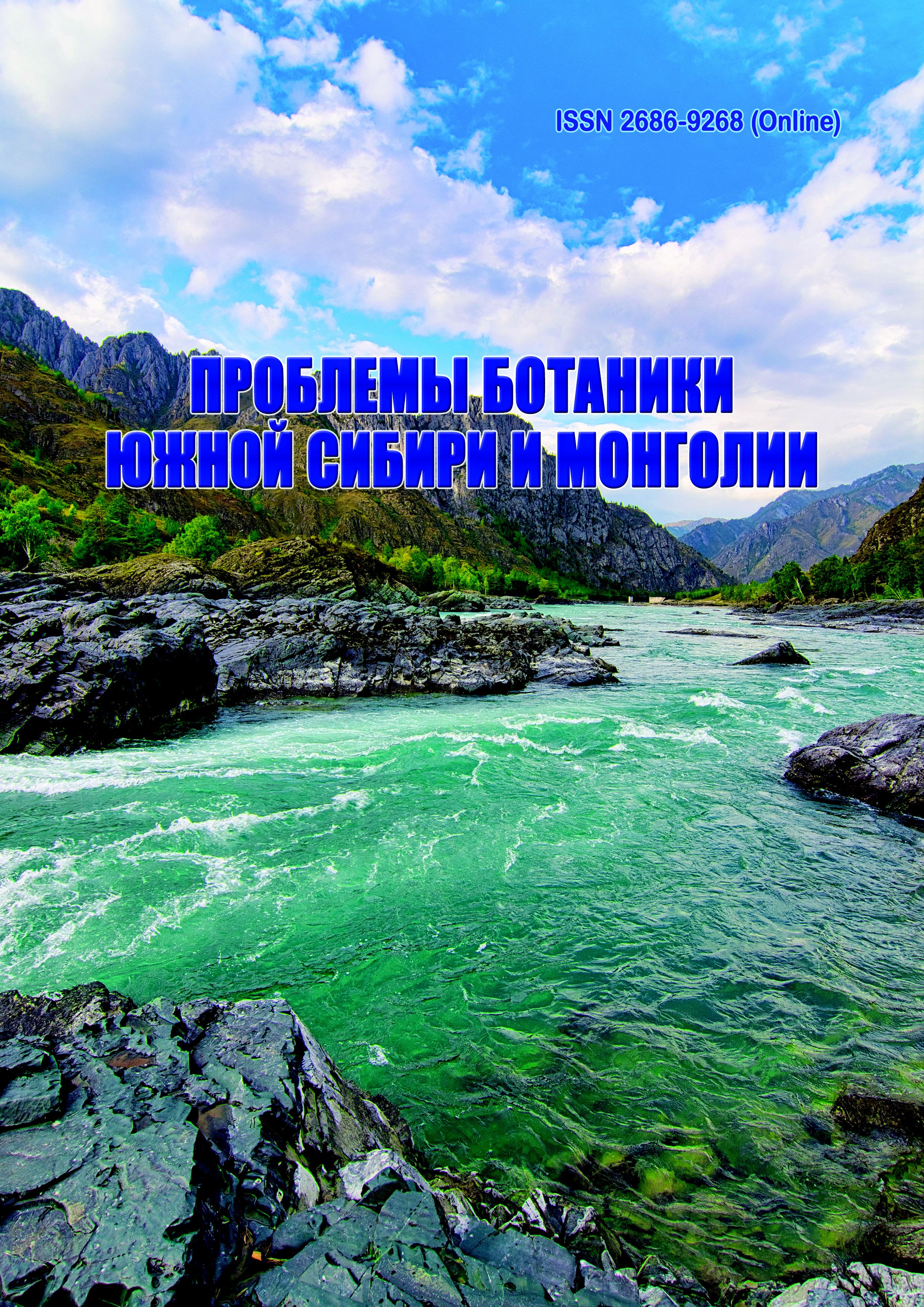Biological reserves of bracken fern (Pteridium aquilinum (L.) Kuhn) in the coniferous forests of Altai Krai
УДК 582.394.742:581.6(571.150)
Abstract
The article presents information on the biological resources of the bracken fern (Pteridium aquilinum (L.) Kuhn) in the coniferous forests of the Altai Krai. Bracken fern is one of the most widespread ferns in the Altai Krai. It often dominates in grass cover in both deciduous and coniferous forests. The author gives a morphological description of the plant, characterizes the features of growth and development, considers the influence of environmental factors (temperature, humidity, lighting, anthropogenic activity) on the distribution and abundance of this species. The article provides data on biological productivity of bracken fern in different natural zones of Russia. The regularities of changes in the biological productivity of the bracken fern were revealed depending on the habitat conditions. In the Altai Krai, commercial harvesting of bracken fern is carried out in various types of forests. Long-term exploitation of the same lands leads to a decrease of resources and disruption of the natural populations’ structure. To study the current state of populations and identify the biological and commercial stocks of bracken, we examined coniferous forests (fir and pine forests) in the zones of mass harvesting of bracken - in the Priobsky Bor area and in the Salair ridge zone. In the study area, 68 key sites in various groups of forest types were established by random sampling. At each site, geobotanical descriptions of the forest community were carried out, the number of fronds, the density of standing, the projective cover and the average weight of one frond were determined. The data obtained are extrapolated to the entire study area. Studies show an extremely uneven distribution of bracken fern in forest types and individual regions. During the research period, the biological, economic and operational stocks of bracken fern were determined and recommendations were given on the amount of annual harvest in various types of forests.
Downloads
Metrics
References
Гордина Н. П., Гапонова Г. А. Обоснование метода учета ресурсов папоротника // Известия КГТИ, 1982. -№ 3(15). - С. 54-59.
Ершова Э. А. К биологии папоротника орляка в Средней Сибири // Известия СО РАН СССР. Сер. биол. наук, 1977. - № 5. - С. 32-37.
Ершова Э. А. Особенности адаптации орляка в Сибири // Сибирский экологический журнал, 2010a. - Т. 17, вып. 6. - С. 955-961.
Ершова Э. А. Рост и развитие орляка обыкновенного в условиях Западной Сибири // Turczaninowia, 2010б. -Т. 13, № 3. - С. 135-139.
Ершова Э. А. Антропогенная трансформация в пригородных сообществах с участием в травостое папоротника орляка (Pteridium pinetorum) // Растительный мир Азиатской России, 2012. - № 2 (10). - С. 132-138.
Иванова В. А., Чудновская Г. В. Современные аспекты изучения ресурсов папоротника-орляка (Pteridium pinetorum C. N. Mill (Hipolepidacea, Pteridofita) как пищевого продукта // Актуальные вопросы аграрной науки, 2014. - № 11. - С. 27-34.
Корякин В. Н. Справочник для учёта лесных ресурсов Дальнего Востока. - Хабаровск: ДальНИИЛХ, 2010. - 526 с.
Костырина Т. В. Продуктивность папоротника орляка (Pteridium aquilinum) в фитоценозах севера Приморья (на примере Вострецовского участкового лесничества) // Аграрный вестник Приморья, 2018. - № 1. - С. 45-48.
Линерова Л. Г., Аксанова Г. Ф., Рябинина З. Н. Исследования папоротниковидных в степной зоне Южного Урала // Вестник ОГУ, 2007. - Вып. 67. - С. 120-126.
Линерова Л. Г., Рябинина З. Н., Воронов А. А., Аксанова Г. Ф. Корреляция морфологических признаков у папоротника орляка обыкновенного // Вестник Оренбургского государственного университета, 2009. - Вып. 100, № 6. - С. 204-207.
Пономарев А. В. Эколого-ценотическая приуроченность и продуктивность популяции орляка соснового (Pteridium pinetorum C. N. Page et Mill.) на юге Приенисейской Сибири: автореф. дис. ...к.б.н. - Красноярск: Институт леса им. В. Н. Сукачева, 2013. - 20 с.
Пономарев А. В., Гордина Н. П. Продуктивность и изменчивость ценопопуляций орляка соснового (Pterid-ium pinetorum, Hipolepidaceae, Pteridiphyta) в Красноярской лесостепи // Растительный мир Азиатской России, 2011. - №2(8). - С. 34-38.
Поскальнюк Н. А. Фитоценотическая приуроченность, экология и изменчивость орляка в Западной Сибири: автореф. дис. .к.б.н. - М.: МГПУ, 2007. - 24 с.
Поскальнюк Н. А. Зональные особенности экологии орляка в разных типах сосновых лесов Западной Сибири // Труды Первой российской птеридологической конференции (г. Томск-Барнаул, 20-30 августа, 2007). - Томск: ТГУ 2007. - С. 166-169.
Поскальнюк Н.Л., Донскова А. Л. О северной границе ареала орляка // Вестник Тюменского государственного университета, 2007. - № 6. - С. 255-300.
Шмаков А. И. Определитель папоротников России. - Барнаул: Изд-во Алт. ун-та, 1999. - 108 с.
Шорина И. И. Экологическая морфология и популяционная биология представителей подкласса Polypodiidae: автореф. дис. . д.б.н. - М.: МПГУ им. В. И. Ленина, 1994. - 36 с.
Gureyeva 1.1., Page C.N. The genus Pteridium (Hipolepidaceae) in northern Eurasia // Bot. journal, 2008. - T. 93, №6. - P. 915-934.
McGloneM. S., Wilmshurst J. M., LeachБ, H. M. An ecological and historical review of bracken (Pteridium esculentum) in New Zealand, and its cultural significance // New Zealand Jornal of ecology, 1998. - T. 29, № 2. - P. 165-184.
Nelson L. S., Shih R. D., BalickM. J. Handbook of Poisonous and Injurious Plant // The New York Botanical Garden. -NY: Springer, 2007. - 247 pр.
Page C. N. The ferns of Britain and Ireland. - Cambrige: Cambrige University Press, 1997. - 540 рp.



